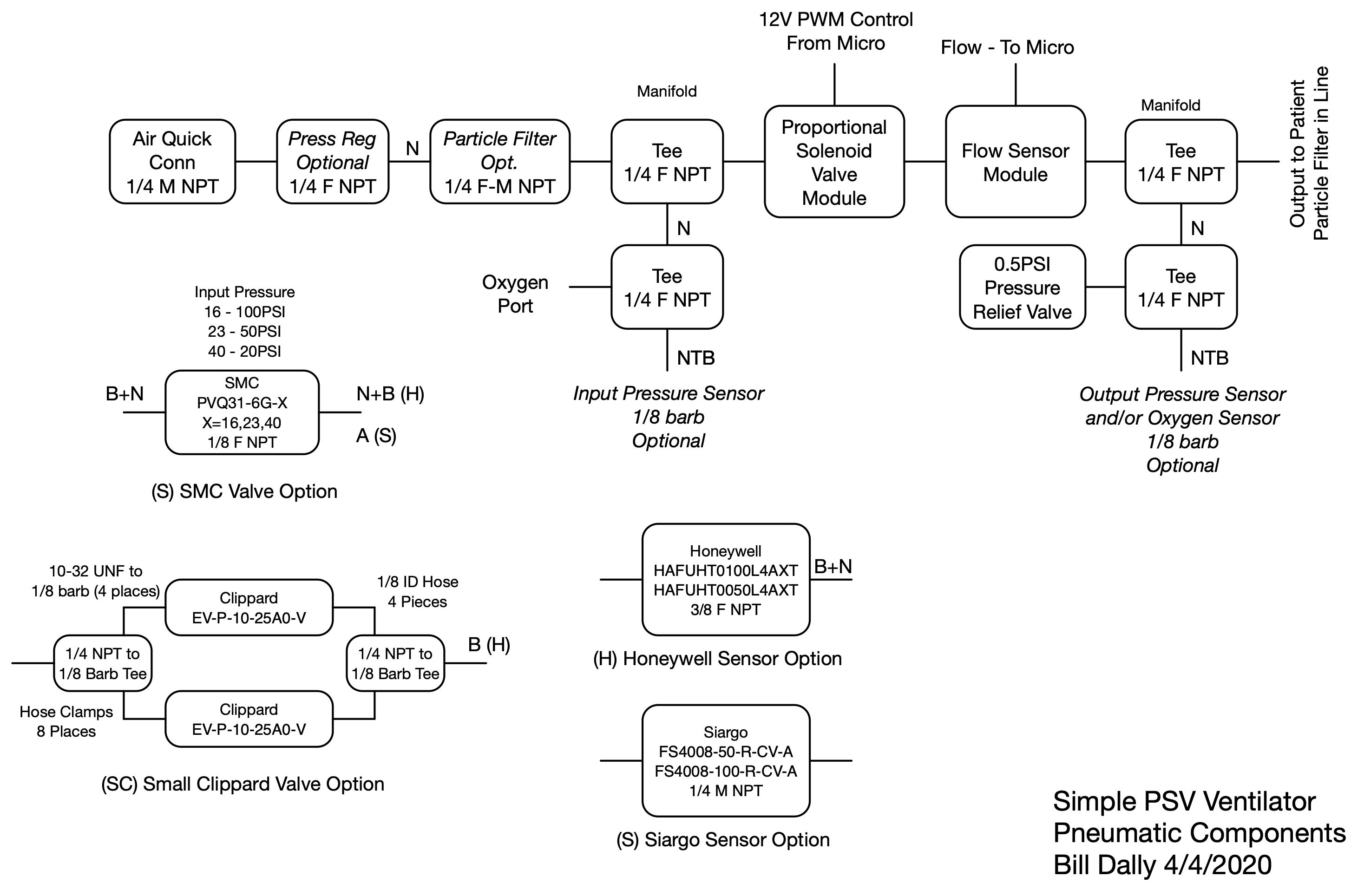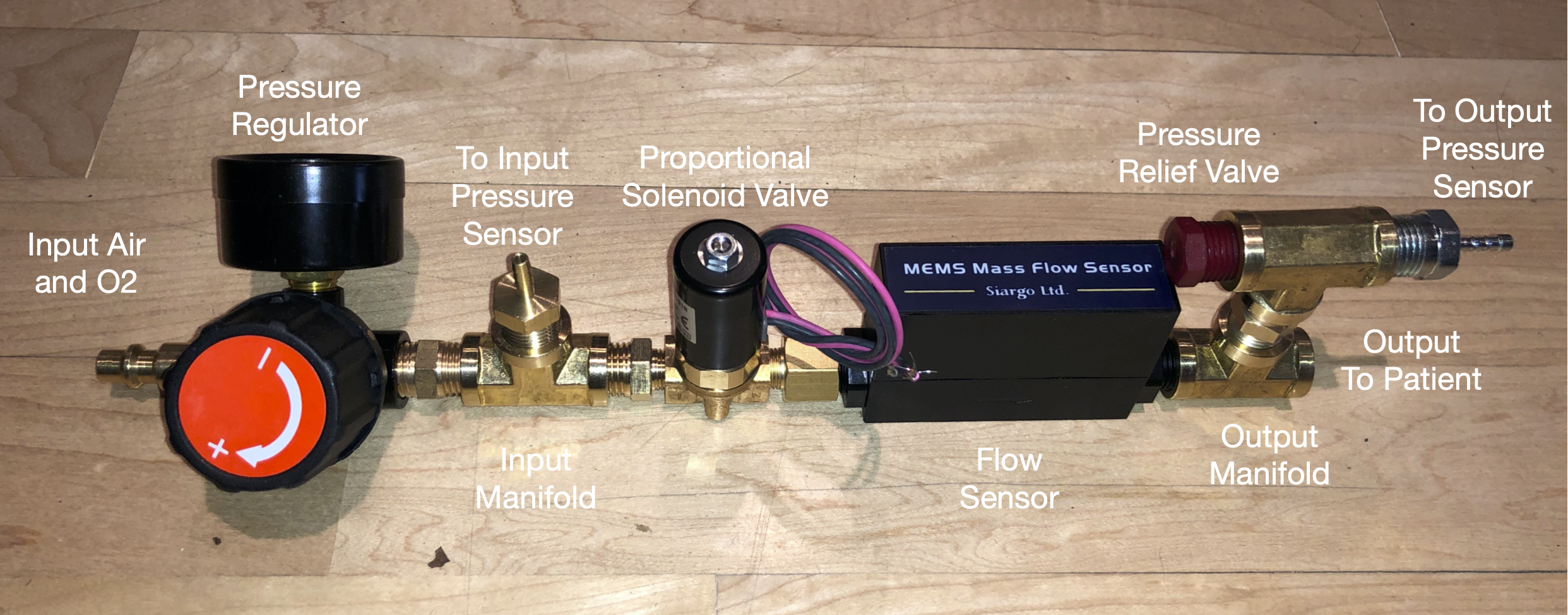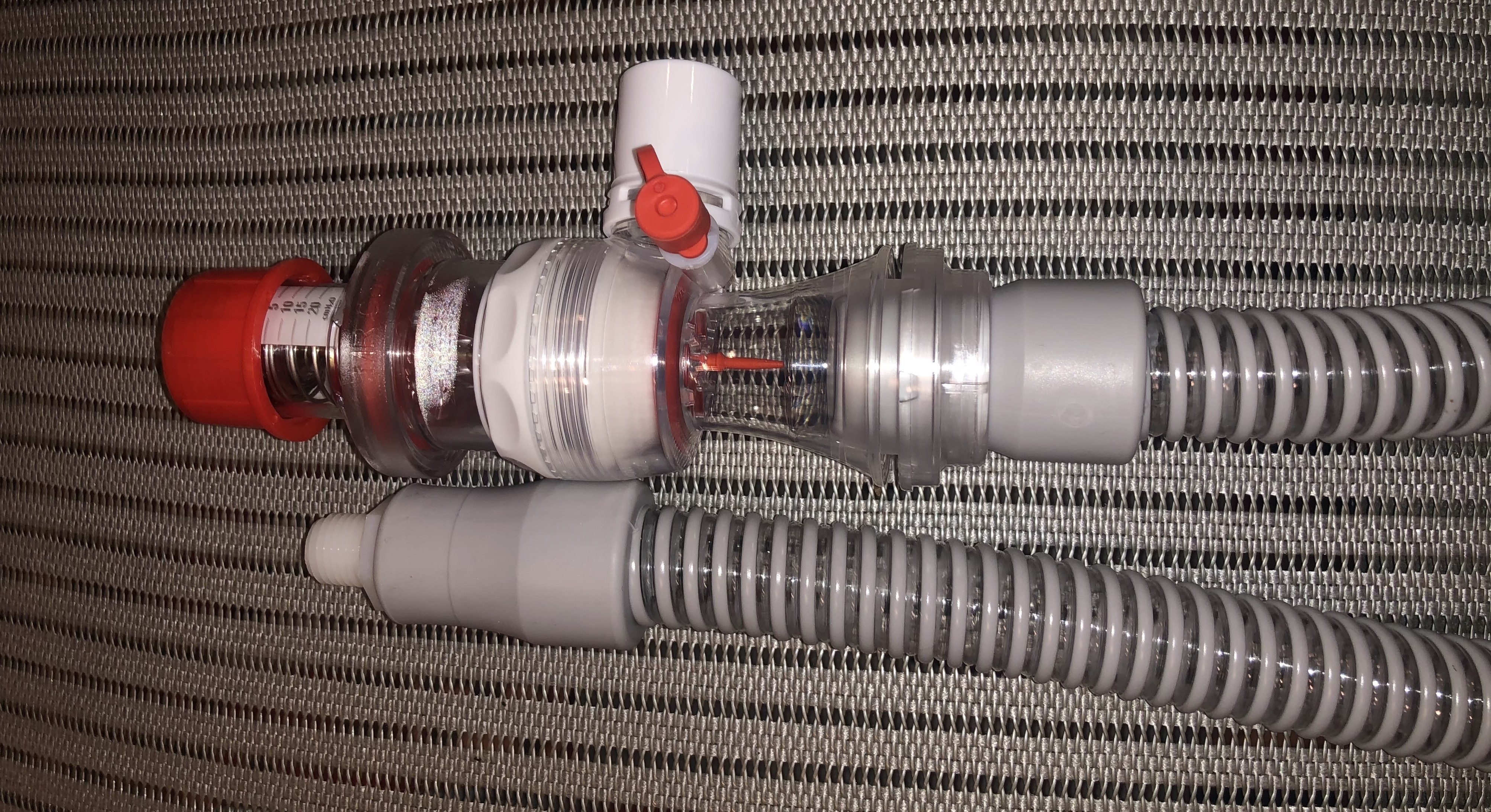 Figure 2: Details of the ventilator pneumatics.
Figure 2: Details of the ventilator pneumatics.
Figure 2 shows details of the ventilator pneumatics (everything but the microcontroller). Figure 3 is a photo of the components. Input conditioning – filtering and pressure regulation – are optionally added to the input side. In the photo a pressure regulator is installed. An input manifold then allows input pressure to be monitored – via a pressure sensor on the microcontroller board. Next in line, the solenoid valve modulates flow. The valve in the photo is an SMC PVQ31 series valve. The optional flow sensor (a Siargo FS4008 in the photo) follows the valve. An output manifold provides a location for the pressure relief valve and enables the output pressure to be monitored. The components are plumbed together using standard ¼ NPT fittings.
 Figure 3: Photo of the ventilator pneumatics
Figure 3: Photo of the ventilator pneumatics
The exhaust path, uses the exhale valve and PEEP valve from a BVM (Figure 4). These are attached to the output end of the pneumatics with a standard 15mm CPAP hose that fits over a ¾ inch hose barb
 Figure 4: Exhale valve and PEEP valve from an Ambu-bag respirator complete the patient circuit. A mask or ET-tube connects to the patient at the top of this figure. Output pressure is monitored at the port (covered with the red cap) on the connection to the ET tube.
Figure 4: Exhale valve and PEEP valve from an Ambu-bag respirator complete the patient circuit. A mask or ET-tube connects to the patient at the top of this figure. Output pressure is monitored at the port (covered with the red cap) on the connection to the ET tube.
A minimal system would include only the solenoid valve and the pressure relief valve. The other components are added to enable feedback control and monitoring. The output circuit to the patient may include a check valve and in-line particle filter. (The output pressure pickup may be placed after these components – or at the patient). A second solenoid valve can be included to provide for oxygen blending in the unit. A diaphragm valve can be added to provide an explicit expiratory circuit. However, at some point, one has a complex ventilator. The goal of this project is to design a simple ventilator with the features needed to treat COVID-19. That system includes a pressure regulator, single solenoid valve, flow-sensor, and pressure sensor. This enables accurately regulating flow, volume, and pressure with a minimum cost, minimum use of scarce components, and minimum assembly time.